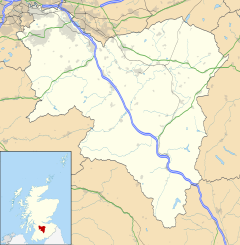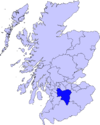
Camping is a form of outdoor recreation or outdoor education involving overnight stays with a basic temporary shelter such as a tent. Camping can also include a recreational vehicle, sheltered cabins, a permanent tent, a shelter such as a bivy or tarp, or no shelter at all. Typically, participants leave developed areas to spend time outdoors, in pursuit of activities providing them enjoyment or in a form of educational experience. Spending the night away from home distinguishes camping from day-tripping, picnicking, and other outdoor activities.

Campsite, campground, and camping pitch are all related terms regarding a place used for camping. The usage differs between British English and American English.
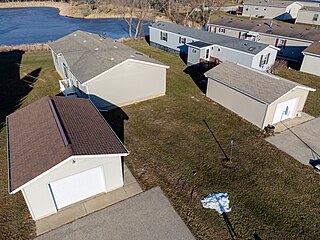
A mobile home is a prefabricated structure, built in a factory on a permanently attached chassis before being transported to site. Used as permanent homes, or for holiday or temporary accommodation, they are often left permanently or semi-permanently in one place, but can be moved, and may be required to move from time to time for legal reasons.
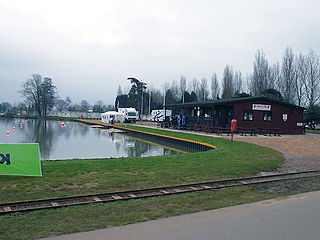
Billing Aquadrome is a leisure park in Great Billing, a district of eastern Northampton, England. Facilities within the 235-acre (1 km2) park, which was built around various mature gravel pits, include a caravan site, marina and funfair. It is also frequently home to a wide variety of shows throughout the year, including music events and car shows such as Vauxfest.

Findochty is a village in Moray, Scotland, on the shores of the Moray Firth; historically it was part of Banffshire. The Gaelic name of the village was recorded by Diack using his own transcription method as fanna-guchti, which is of unclear meaning. One of the earliest references to Findochty is in 1440, when the king granted Findachtifeild to John Dufe, son of John Dufe. The lands passed from the Duffs to the Ogilvies of Findlater, and subsequently, in 1568, the Ord family acquired the manor, port, custom, and fishers' lands of Findochty, and later built the House of Findochty, known as Findochty Castle, now a ruin, which stands to the west of the village. In 1716 the Ords brought 13 men and 4 boys from Fraserburgh under contract to fish from Findochty, and for a time the harbour was busy with landings of herring and white fish. Findochty expanded as a fishing port through the 1700s and 1800s, and by 1850 was home to 140 fishing boats. But the expansion in the late 1800s of nearby Buckie provided a better harbour, and some of the fishing fleet had left Findochty by 1890. Findochty harbour is now used mostly by pleasure craft and is a good sun spot when the tide is out. A local artist, Correna Cowie, created a statue in 1959 of a seated fisherman, known as The White Mannie, who watches over the harbour.

A recreational vehicle park or caravan park is a place where people with recreational vehicles can stay overnight, or longer, in allotted spaces known as "sites" or "campsites". They are also referred to as campgrounds, though a true campground also provides facilities for tent camping; many facilities calling themselves "RV parks" also offer tent camping or cabins with limited facilities.

The Bught is an area of the Scottish city of Inverness. A "bught" is defined in the Dictionary of the Scots Language as follows "Bowcht, Bucht, n. Also: boucht; bowght, bought. [Flem. bocht, bucht, inclosure for swine, sheep, etc.] A sheep-fold; a milking fold for ewes."

Alford is a large village in Aberdeenshire, north-east Scotland, lying just south of the River Don. It lies within the Howe of Alford which occupies the middle reaches of the River Don.

Sutton Bank is a hill in the Hambleton District of the North York Moors National Park, North Yorkshire in England. It is a high point on the Hambleton Hills with extensive views over the Vale of York and the Vale of Mowbray.

Ballyhalbert is a small village and townland in County Down, Northern Ireland. It is on the east coast of the Ards Peninsula between Ballywalter and Portavogie. It is largely residential and has a small harbour and large caravan site which was formerly a Royal Air Force (RAF) airfield, RAF Ballyhalbert, during World War II. It is within the Ards and North Down Borough. It had a population of 1,026 people in the 2011 Census, up from 447 people in the 2001 Census.
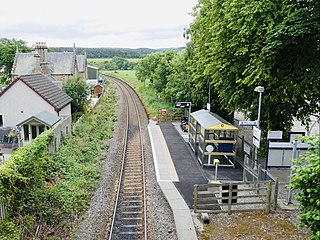
Beauly railway station is a railway station in the village of Beauly, in the Highland council area of Scotland. Located on the Far North Line, it is 10 miles 12 chains (16.3 km) down the line from Inverness, and it is the first intermediate station on the line, before reaching Muir of Ord. ScotRail, who manage the station, operate all services.

Dunkeld & Birnam railway station serves the town of Dunkeld and village of Birnam in Perth and Kinross, Scotland. It is located on the Highland Main Line, 15 miles 31 chains (24.8 km) north of Perth and is the first stop on the line north of there, before Pitlochry. Most services are operated by ScotRail, who also manage the station. LNER and Caledonian Sleeper also call some services here.
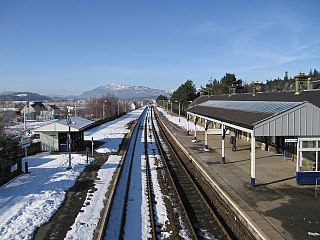
Kingussie railway station serves the town of Kingussie, Inverness-shire in the Highland Council Area of Scotland. The station is managed by ScotRail and is on the Highland Main Line, 71 miles 43 chains (115.1 km) from Perth, between Newtonmore and Aviemore.
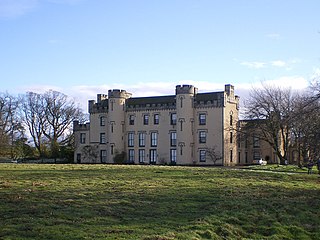
The House of the Binns, or simply the Binns, is a historic house in West Lothian, Scotland, the seat of the Dalyell family. It dates from the early 17th century, and was the home of Tam Dalyell until his death in January 2017.

Southerness is a small, compact coastal village in Dumfries and Galloway, Scotland. Southerness is located approximately 2 mi (3.2 km) south of the A710 between Caulkerbush and Kirkbean. The town today is mainly a tourist village and has for many years had a large number of static caravans, some private and many rented to holiday makers. The local bus services to and from Dalbeattie and Dumfries are more frequent during the summer season.

Strathyre is a district and settlement in the Stirling local government district of Scotland. It forms the south-eastern part of the parish of Balquhidder and was, prior to the 1973 reorganisation of local government, part of Perthshire. It is within the bounds of the Loch Lomond and the Trossachs National Park. In Gaelic, the district is Srath Eadhair and the village is An t-Iomaire Riabhach or an t-Iomaire Fada.
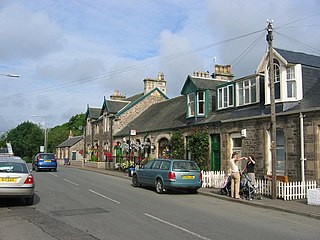
Kirkfieldbank is a small village and parish in Scotland, on the banks of the River Clyde. It is close to the town of Lanark and is part of the current South Lanarkshire local authority. The village of New Lanark is also close by, some ten minutes drive upstream.
Portessie is a small fishing village east of Buckie, on the north-east coast of Scotland. It is commonly nicknamed "the Sloch", due to the name of the original settlement being Rottenslough. The village is sandwiched between Buckie and Findochty, two popular tourist spots.
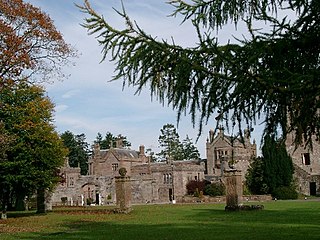
Hoddom Castle is a large tower house in Dumfries and Galloway, south Scotland. It is located by the River Annan, 4 kilometres (2.5 mi) south-west of Ecclefechan and the same distance north-west of Brydekirk in the parish of Cummertrees. The castle is protected as a category A listed building.

Ravenstruther Rail Terminal is a freight handling facility near Ravenstruther in Scotland.

